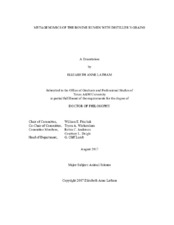| dc.description.abstract | The collective prokaryotic diversity in the rumen was examined by performing a meta-analysis of the 16s rRNA gene sequences available. This included 34 studies as of December 2016, with 22,003 OTUs, representing 68 phyla and 788 genera. A strong clustering of the rumen microbiota by study suggesting that technical differences between laboratories cause significant differences in the observed diversity. However, some factors produced sufficient changes in the gut microbiota to influence clustering patterns including genus of animal, fraction of the rumen, sample collection method, primer type, and diet. Regardless of experimental factor, the samples representing the solid or fiber fraction of the rumen separated from the liquid fraction.
The diversity of the rumen microbiome allows producers to feed many agricultural co-products that otherwise have limited value and would be discarded. One such product is distillers’ grains, which have been utilized by the U.S. beef cattle industry for decades. However, few studies have examined the effect of these coproducts and dietary changes on the rumen microbiome. Our first microbiome study with co-products included a comparison of Bos indicus and Bos taurus fed distillers’ grains. Characterization of the rumen bacterial populations and their function has provided insights into these differences and the response to distillers’ grains supplementation. Differences in relative abundance in key bacterial taxa were observed across species. Our second metagenomic study is focused on elucidating the effect of corn-based, sorghum-based, and treated sorghum-based distillers’ grain diets in finishing feedlot diets on the rumen microbial ecology and function. Both studies found limited dietary influence on the rumen microbiome as based on beta diversity metrics; however, diversity was greatest in a lower quality diet than the high-quality finishing diet. The effect of fraction was greatest in the microbial populations within the confines of a low-quality diet and lessened with a high-quality diet. Individual animal or host effect was a large influence on differences across samples in both studies. | en |


